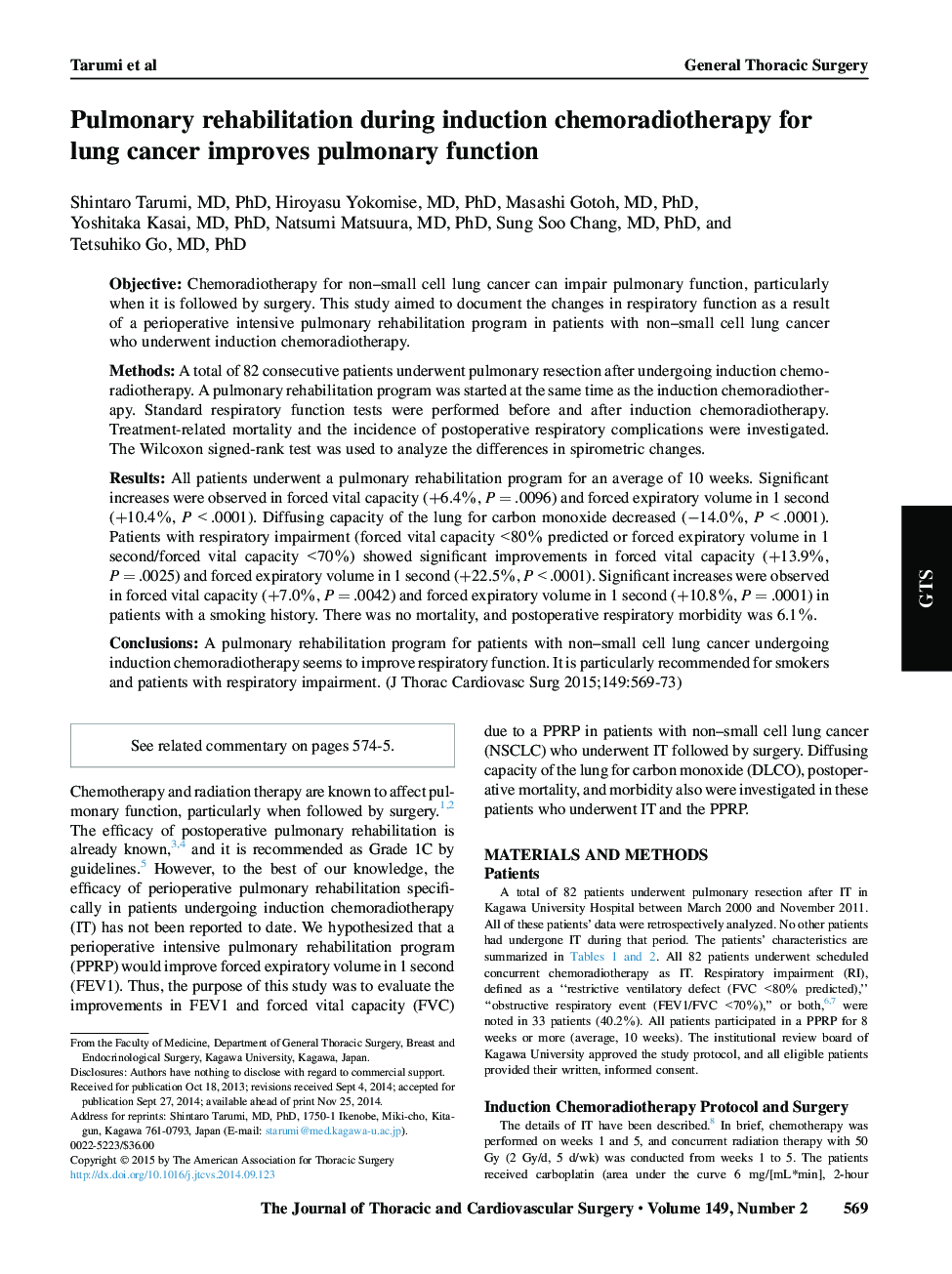| Article ID | Journal | Published Year | Pages | File Type |
|---|---|---|---|---|
| 2980154 | The Journal of Thoracic and Cardiovascular Surgery | 2015 | 5 Pages |
ObjectiveChemoradiotherapy for non–small cell lung cancer can impair pulmonary function, particularly when it is followed by surgery. This study aimed to document the changes in respiratory function as a result of a perioperative intensive pulmonary rehabilitation program in patients with non–small cell lung cancer who underwent induction chemoradiotherapy.MethodsA total of 82 consecutive patients underwent pulmonary resection after undergoing induction chemoradiotherapy. A pulmonary rehabilitation program was started at the same time as the induction chemoradiotherapy. Standard respiratory function tests were performed before and after induction chemoradiotherapy. Treatment-related mortality and the incidence of postoperative respiratory complications were investigated. The Wilcoxon signed-rank test was used to analyze the differences in spirometric changes.ResultsAll patients underwent a pulmonary rehabilitation program for an average of 10 weeks. Significant increases were observed in forced vital capacity (+6.4%, P = .0096) and forced expiratory volume in 1 second (+10.4%, P < .0001). Diffusing capacity of the lung for carbon monoxide decreased (−14.0%, P < .0001). Patients with respiratory impairment (forced vital capacity <80% predicted or forced expiratory volume in 1 second/forced vital capacity <70%) showed significant improvements in forced vital capacity (+13.9%, P = .0025) and forced expiratory volume in 1 second (+22.5%, P < .0001). Significant increases were observed in forced vital capacity (+7.0%, P = .0042) and forced expiratory volume in 1 second (+10.8%, P = .0001) in patients with a smoking history. There was no mortality, and postoperative respiratory morbidity was 6.1%.ConclusionsA pulmonary rehabilitation program for patients with non–small cell lung cancer undergoing induction chemoradiotherapy seems to improve respiratory function. It is particularly recommended for smokers and patients with respiratory impairment.
